SERBIA
Plants and Animals

Plants and Animals
Cities in SERBIA
| Belgrade |
Plants and Animals
Plants and Mushrooms
Together with Montenegro, Serbia is home to about 4300 species of plants, 2% of all plant species in the world. Of all these, 400 are endemic, including the snakeskin pine, the Balkan pine and the rare Serbian spruce, which was discovered only a hundred years ago and is the national tree of Serbia. Many wild plants in Serbia are valued for their medicinal properties.
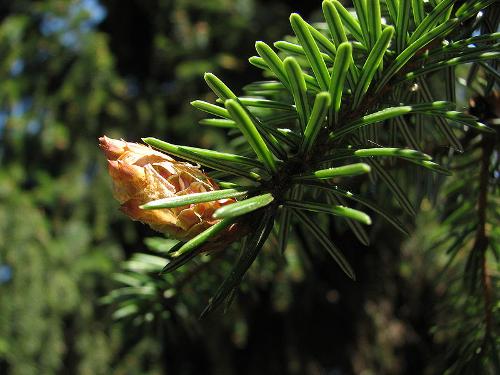 Serbian SprucePhoto: Adamantios CC 3.0 no changes made
Serbian SprucePhoto: Adamantios CC 3.0 no changes made
The many forest areas provide an ideal habitat for many species of mushrooms, including more than a hundred species on the Red List of Threatened Species. One of the most endangered mushrooms in the world is the king bolete, which is still quite common in Serbia. A number of mushrooms found in Serbia are used to make cancer medicines, for example the flat tinder fungus.
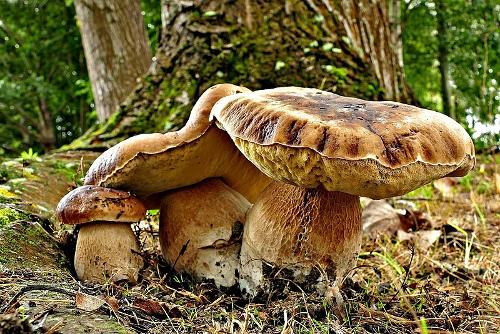 King Bolete, SerbiaPhoto: Bernard Spragg in the public domain
King Bolete, SerbiaPhoto: Bernard Spragg in the public domain
Serbia has no official national flower, but many Serbs consider the 'božur' or peony as such. Legend has it that the flower changed from white to red because of the massacre at the Battle of Kosovo in 1389.
Animals
Serbia has a rich and varied fauna: 80% of all European bird species occur here as breeding or migratory birds, 66% of all European mammals, butterflies and insects and 50% of all freshwater fish. Ninety mammal species occur in Serbia, some of which are very rare in Europe. Furthermore, 110 species of freshwater fish, with fourteen subspecies found only in this region; seven species are on the European Red List of Critically Endangered Species. Serbia is home to seventy reptile species, much more than in large neighboring countries such as Romania and Bulgaria.
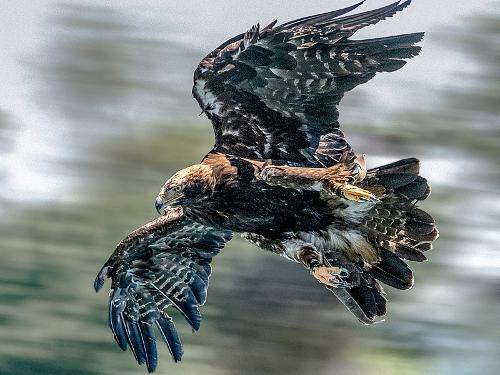 Imperial Eagle, SerbiaPhoto: Bernd Thaller CC 2.0 no changes made
Imperial Eagle, SerbiaPhoto: Bernd Thaller CC 2.0 no changes made
More than 350 bird species have been recorded in Serbia, many of which are migratory, both south and north. Of the breeding birds, 103 species are extra protected and the white-eyed duck, imperial eagle, lesser kestrel, great bustard and corncrake are important for the world population. Serbia also has a large share of European populations of relatively rare birds such as saker falcon, forest monkey, purple heron, scops owl, middle spotted woodpecker and Syrian spotted woodpecker.
The Pannonian Plain near Vojvodina has wet areas (pools, fishponds, meadows and willow forests), where many wading birds occur. Here you will encounter pygmy cormorants, bittern, wood monkey, night heron, egret, great egret, purple heron, spoonbill, white-eyed duck, sea eagle, bee-eater, common redstart, mustache and little gray shrike.
South of Belgrade, in mountainous terrain, birds of prey such as short-toed eagle, long-eared hawk, Egyptian vulture and griffon vulture are well represented, as well as smaller birds such as red-rumped swallow, wallcreeper, red rock thrush, beach lark, wrasse, red-headed shrike, red shrike, circling bunting, gray bunting, black-headed bunting , ortolan bunting, barred warbler, bearded warbler, mountain warbler, nutcracker, alpine jackdaw, griffon swift, Spanish sparrow and rock sparrow.
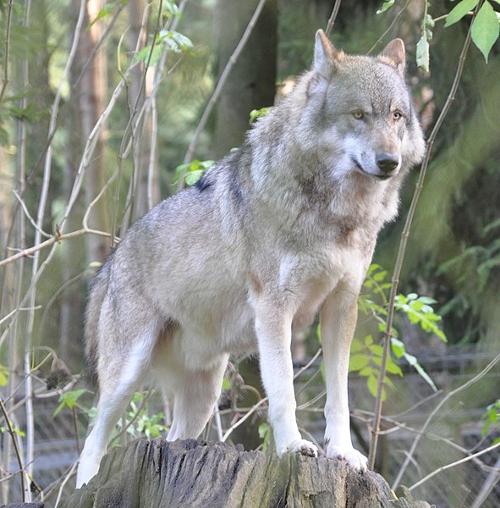 Grey Wolf, SerbiaPhoto: Quartl CC 3.0 no changes made
Grey Wolf, SerbiaPhoto: Quartl CC 3.0 no changes made
Special areas and their flora and fauna:
Tara National Park: golden eagle, peregrine falcon, griffon vulture, brown bear, chamois, wildcat, otter.
Fruška Gora National Park: Imperial eagle, wildcat, badger, pine marten.
Ðerdap National Park: brown bear, lynx, gray wolf (national animal of Serbia), jackal, black stork, golden eagle, eagle owl.
Kopaonik National Park: golden eagle, crossbill, viviparous lizard.
Šara National Park: golden eagle, griffon vulture, capercaillie, wildcat, lynx, brown bear, chamois, Balkan snow mouse or mountain mouse.
Ludaš Lake: black-necked grebe, purple heron, egret, forest monkey, bearded male, marsh harrier, European terrapin.
Obedska Bara: little egret, night heron, forest monkey, bittern, black stork, spoonbill, white-tailed eagle, screech eagle, little moorhen, china grouse, middle spotted woodpecker, white-legged flycatcher, black kite, mustache, beaver, otter.
In and around Belgrade: avocet, black-winged stilt, grebe, red-necked grebe, black-necked grebe, little grebe, white-cheeked tern, white-eyed duck, stonechat, nightingale, sparrowhawk.
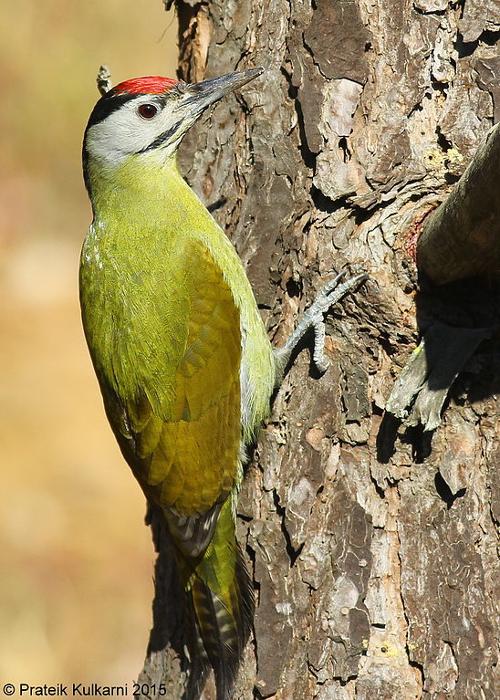 Grey-headed Woodpecker, SerbiaPhoto: Prateik Kulkarni CC 4.0 no changes made
Grey-headed Woodpecker, SerbiaPhoto: Prateik Kulkarni CC 4.0 no changes made
In and around Vojvodina: greylag goose, gadwall, shoveler, corncrake, bearded man, nightjar, dune pipit, roller, screech eagle, honey buzzard, black-headed bunting, black kite, pintail, red-legged falcon, plover, curlew, short-eared owl, bluethroat, hazel grouse, European stonecrop, European stonecrop Alpine swift, red tit, hoopoe, wryneck, sparrow warbler, spotted polecat, gray wolf, otter, coypu.
Danube river basin: short-toed eagle, gray-headed woodpecker, rough-legged owl, merganser, Ural owl, ring thrush, siskin, beach lark, firecrest.
Sources
Detrez, R. / Servië-Montenegro : mensen, politiek, economie, cultuur, milieu
Koninklijk Instituut voor de Tropen ; Novib
Milivojevic, J. / Serbia
Children’s Press
Mitchell, L. / Serbia
Bradt Travel Guides
Schuman, M.A. / Serbia and Montenegro
Facts On File
CIA - World Factbook
BBC - Country Profiles
Last updated November 2025Copyright: Team The World of Info